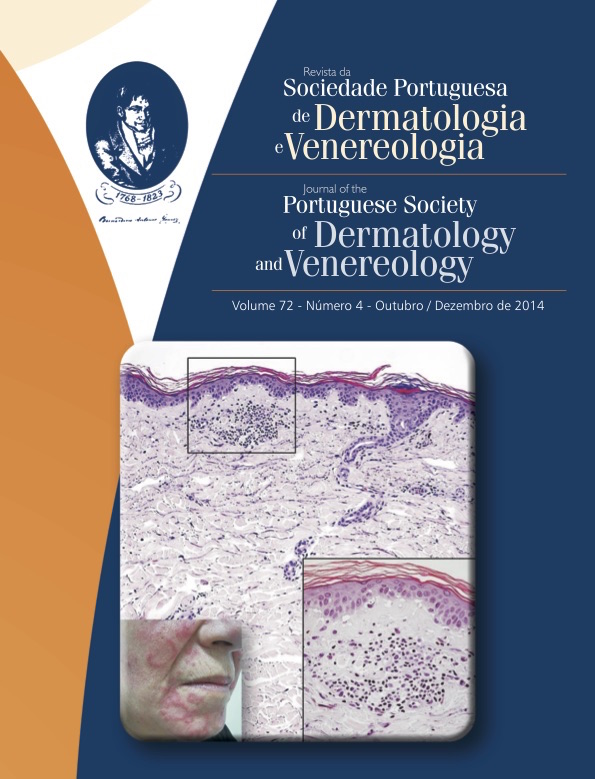EYELID DERMATITIS – 5-YEAR RETROSPECTIVE STUDY (2009-2013)
Abstract
Background: Eyelid dermatitis is a common disease and its etiology frequently difficult to ascertain, although allergic contact dermatitis is the most common cause in patch-tested patients. This is a 5-year retrospective study to evaluate the most frequent causes and allergens in patients with allergic eyelid dermatitis.
Materials and Methods: Using a computerized database, patients with eyelid dermatitis patch tested over a 5-year period from 2009-2013 on the Dermatology Consultation of Hospital Curry Cabral were identified.
Results: Over the 5-year period (2009-2013) from a total of 1341 patch tested patients, 117 (8.7%) had eyelid dermatitis. The most frequent etiology was allergic eyelid dermatitis (54 patients), followed by atopic dermatitis (22 patients). Toluenesulfonamide Formaldehyde resin was the most frequent allergen identified. The preservative allergens group was the most frequently identified, followed by fragrances and drugs.
Downloads
References
Guin J. Eyelid dermatitis: experience in 203 cases. J Am Acad Dermatol. 2002; 47(5):755-65.
Amin KA, Belsito DV. aetiology of eyelid dermatitis: a 10-year retrospective analysis. Contact
Dermatitis. 2006; 55(5):280-5.
Landeck L, John SM, Geier J.riorbital dermatitis in 4779 patients - patch test results during a 10-year period. Contact Dermatitis. 2014; 70(4):205-12
Goossens A. Contact allergic reactions on the eyes and eyelids. Bull Soc Belge Ophtalmol 2004; 292:11-7.
Valsecchi R, Imberti G, Martino D, Cainelli T. Eyelid dermatitis: an evaluation of 150 patients. Contact Dermatitis 1992; 27:143-7.
Shah M, Lewis F M, Gawkrodger D J. Facial dermatitis and eyelid dermatitis: a comparison of patch test results and final diagnoses. Contact Dermatitis. 1996; 34:140-1.
Landeck L, Schalock P C, Baden L A, Gonzalez E. Periorbital contact sensitization. Am J Ophthalmol. 2010; 150:366-70.
Cronin E. Nail varnish. Contact dermatitis.1st edition. Edinburgh: Churchill Livingstone; 1980.Guin J. Eyelid dermatitis: a report of 215 patients. Contact Dermatitis 2004; 50:87-90.
Guin J. Eyelid dermatitis: a report of 215 patients. Contact Dermatitis 2004; 50:87-90.
Cooper SM. Eyelid dermatitis: an evaluation of 232 patch test patients over 5 years. Contact Dermatitis.
; 42(5):291-3.
All articles in this journal are Open Access under the Creative Commons Attribution-NonCommercial 4.0 International License (CC BY-NC 4.0).








